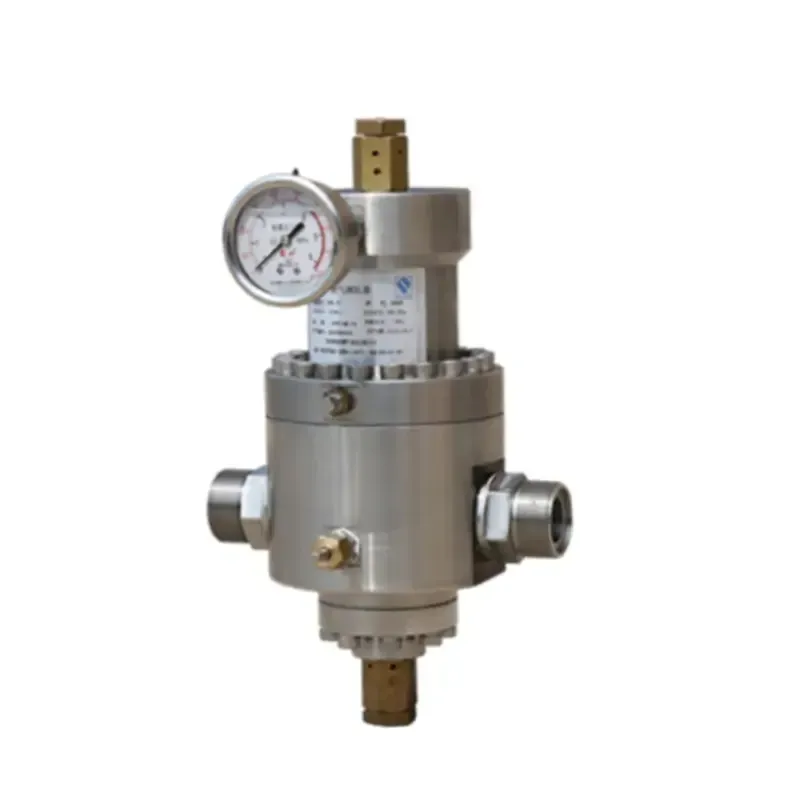
10 月 . 18, 2024 14:48
Back to list
Portable Equipment Solutions for Flexible and Efficient Operations in Various Environments
Understanding Skid-Mounted Equipment Flexibility and Efficiency in Industrial Applications
In the era of rapid industrialization, the need for versatile and efficient equipment has never been more critical. One solution that has gained significant traction across various industries is skid-mounted equipment. This form of machinery offers numerous benefits, ranging from portability to ease of installation, making it an ideal choice for businesses looking to optimize their operations.
What is Skid-Mounted Equipment?
Skid-mounted equipment refers to tools, machines, or systems that are built onto a sturdy frame, known as a “skid.” This framework allows the equipment to be easily transported and relocated as needed. The skid serves as a base that ensures stability and support, enabling the machinery to function optimally regardless of its environment. Common examples include generators, pumps, compressors, and packaged processing systems.
Key Advantages of Skid-Mounted Equipment
1. Portability One of the defining features of skid-mounted equipment is its portability. Industries often require moving machinery from one location to another, whether for temporary projects or changing operational needs. The skid design facilitates easy transport, allowing for quick setup at different sites without extensive groundwork.
2. Reduced Installation Time Skid-mounted systems come pre-assembled and tested, significantly reducing installation time. Traditional equipment often requires extensive setup and integration before it can be put to use. In contrast, skid-mounted units can be delivered and quickly operational, enabling businesses to realize their productivity goals faster.
3. Cost-Effectiveness By eliminating the need for permanent infrastructures, such as concrete pads or extensive piping, skid-mounted systems can provide an economical solution for industries. Their flexibility can lead to reduced overhead costs, as companies can adapt their equipment needs without committing to long-term installations.
4. Flexibility and Adaptability Industries are often dynamic, with changing demands and requirements. Skid-mounted equipment allows companies to remain agile, adjusting to new projects or market conditions without the hassle of extensive modifications. This adaptability is especially beneficial in sectors like oil and gas, mining, and construction, where operational demands fluctuate.
skid mounted equipment

5. Maintenance and Repair Accessibility is crucial when it comes to maintenance. Skid-mounted units are easier to access, allowing for more straightforward maintenance and repair processes. This accessibility helps minimize downtime, ensuring operations are not significantly disrupted by necessary service work.
Applications Across Industries
Skid-mounted equipment is used in a wide range of applications across various industries
- Oil and Gas In the oil and gas sector, skid-mounted systems are often used to transport fluids or gases. They can also serve as mobile drilling units or temporary production facilities, allowing for agile responses to exploration and extraction needs.
- Construction Construction sites often utilize skid-mounted machinery for tasks such as dewatering or temporary power supply. Their portability means they can be moved throughout a site, adapting to the current project phase.
- Manufacturing In manufacturing, skid-mounted equipment may include mobile conveyor systems or pre-packaged process units that enhance production line efficiency.
- Emergency Services In emergency situations, skid-mounted equipment like portable generators or water treatment units can be quickly deployed to provide crucial support in disaster recovery efforts.
Conclusion
Skid-mounted equipment represents a significant advancement in industrial machinery by marrying portability with efficiency. The myriad benefits it offers, including reduced installation time, cost-effectiveness, and flexibility, make it a valuable asset across various industries. As businesses continue to seek ways to enhance productivity and respond to changing environments, skid-mounted systems will likely remain a vital component of their operational strategies. Embracing this technology can lead to enhanced performance and smoother operations in today's fast-paced industrial landscape.
Latest news
-
Unlocking The Quality Gas Pressure ReducersNewsNov.01,2024
-
The Role of Gas Pressure Reducing StationsNewsNov.01,2024
-
The Importance and Functionality of Safety Relief ValvesNewsNov.01,2024
-
The Essential Role of Safety Valves in Natural Gas ApplicationsNewsNov.01,2024
-
The Essential Role of Gas Pressure RegulatorsNewsNov.01,2024
-
Enhance Your Premium Gas FiltersNewsNov.01,2024

